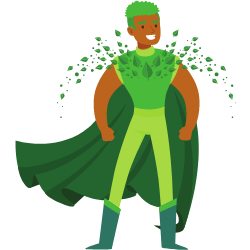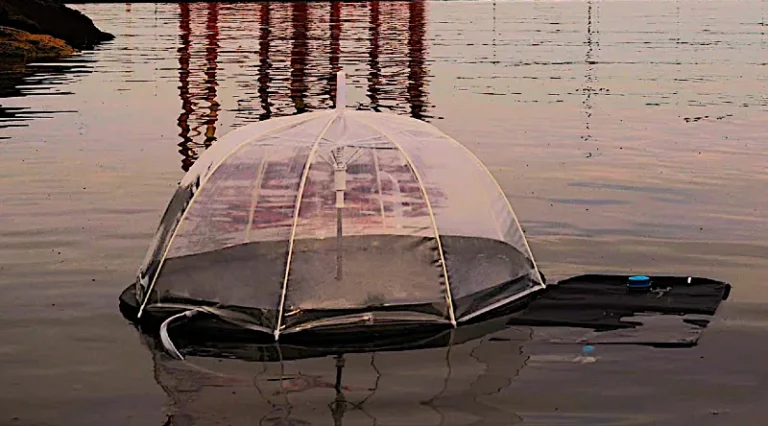FloaX: A Concept Design For Urban Drainage
In our daily hustle, it’s easy to overlook the mundane until it spirals into a nuisance. Take, for example, the humble drain cover: an unsung hero of urban infrastructure, largely ignored until it fails to prevent a puddle or worse, becomes a graveyard for your valuables or a breeding ground for pests. It’s a classic case of out of sight, out of mind, until suddenly, it’s a problem. This oversight has led to a stagnation in design, with most drain covers doing the bare minimum, if that. They’re often eyesores, ineffective, and a boon for mosquitoes, bacteria, and other unwelcome guests (including the occasional stuck foot or child’s leg).
Luckily, designer Chris Chang, decided to give these overlooked urban essentials a much-needed facelift.
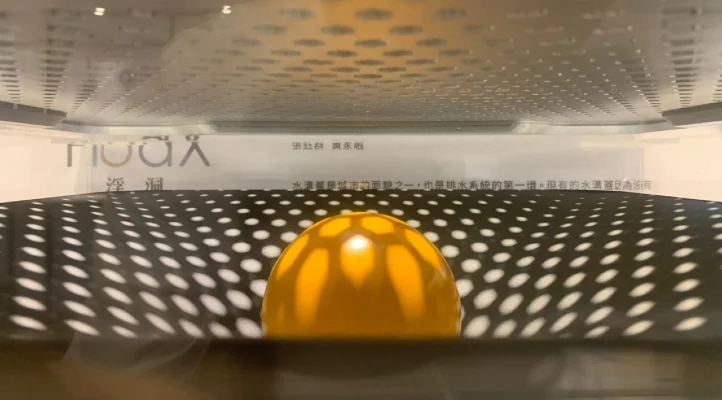
Creating a ditch cover that’s both functional and aesthetically pleasing is no small feat. The challenge lies in balancing two conflicting objectives: the cover must allow water to pass through freely to avoid flooding, yet its openings must be fine enough to prevent the loss of personal items and feet from getting stuck and small enough to keep out mosquitoes and prevent backflow of sewage water during floods.
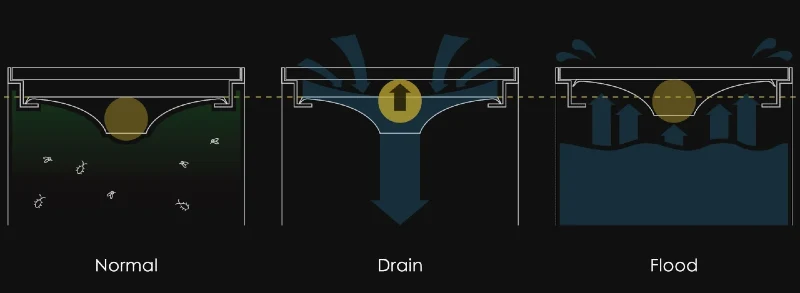
Enter FloaX, a concept ditch cover designed to elegantly tackle these challenges. Its innovation lies in its ability to let water through while keeping harmful elements and valuables out, all without compromising on looks. This design isn’t just about practicality; it’s a statement piece for the streets.
The genius of the FloaX lies in its use of floating components that adapt to changing conditions. A lightweight rubber ball acts as a dynamic plug, sealing the drain when dry but floating up to allow water passage during rain. Below this ball, a valve plank operates similarly, sealing off to block pests and odors or rising to prevent sewage backflow during flooding. These components aren’t fixed in place but housed within a metal frame that keeps them integrated while allowing freedom of movement.
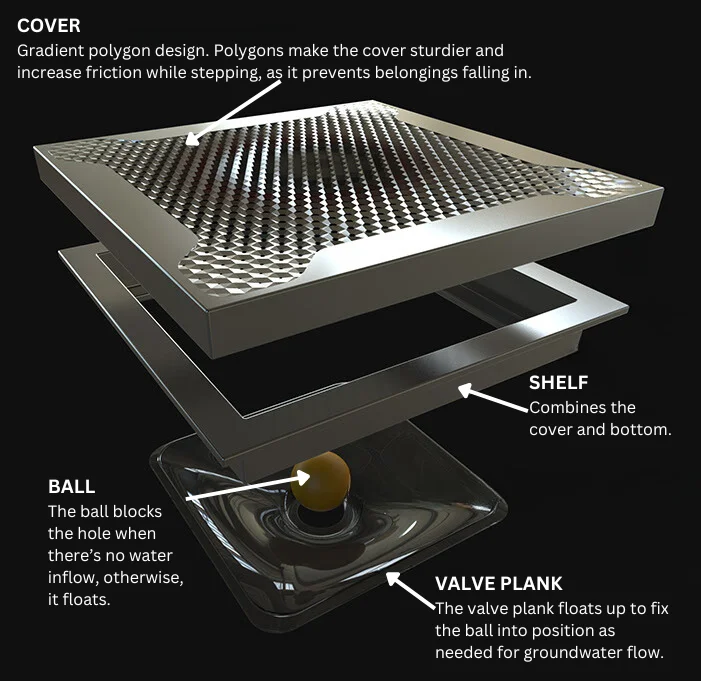
Gone are the traditional grille designs, replaced by a polygonal pattern that’s as effective as it is visually appealing. This design ensures water can enter while keeping out small objects, improving structural integrity, and reducing slip hazards. The aesthetic appeal of FloaX cannot be understated; it transforms a utility into a potential urban attraction.
While FloaX presents a compelling vision for urban drainage, the practicality of its implementation due to the design’s reliance on moving parts raises questions about durability and maintenance, particularly in environments with heavy debris or freezing conditions.
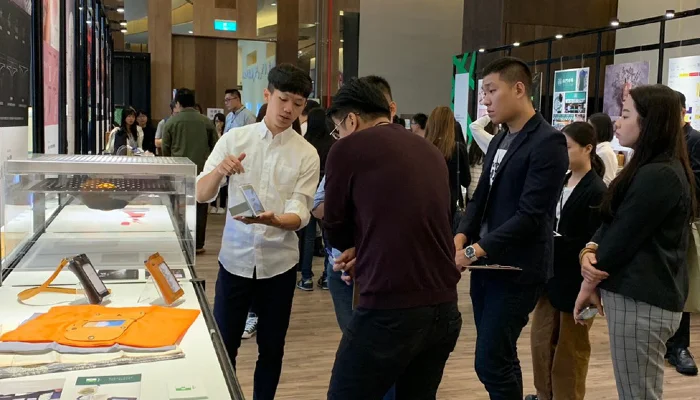
That does not mean this design shouldn’t be tested in high-population areas such as New York City to understand how the balls hold up over time. A few manufacturing pivots (stronger, sustainable materials) may be all that’s required for maintenance-free longevity.
The sustainable aspect of FloaX hinges on the materials and manufacturing processes used. Ideally, eco-friendly materials that are both durable and recyclable would make FloaX a truly green solution. And that’s very doable with the right manufacturing partner.

That said, even without sustainable materials used, this design still has a great deal of eco-potential! Mosquitoes are an unpleasant reality of human existence – a nuisance that leads to 830,000 deaths globally, but they’re also the main food source of many birds and bats, pollinators we desperately need. This grate design allows them to thrive beneath our feet and forces them to exit the sewers in less populated areas, thereby pushing them to the more common feeding grounds of our helpful pollinators.
Cost is another crucial factor. Innovative designs often come with higher initial costs, which could be a barrier to widespread adoption. Municipalities looking to implement such solutions must weigh the benefits of improved urban aesthetics and functionality against budget constraints.
Of course, in the United States, most cities can tap into grant programs to, at least, partially fund innovative testing that may benefit the community.
More To Discover
- Color-Changing Lid Alerts to Spoiling Food: A Simple Solution to Save Your Groceries, Lower Food Waste
- Turning Old Movie Screens into Sustainable Chic Modern Decor
- Sun-Chasing Streetlights: Solar Lamps Spin and Move to Brighten Our Streets
- Electric Scooter Concept Aims to Overcome EV Challenges with Automated Battery Swap System
In summary, FloaX represents a promising step forward in urban design, marrying functionality with form in a way that could significantly enhance our daily environment. However, its success will depend on addressing practical concerns such as durability, maintenance, and cost, without compromising its innovative features or sustainability.
Meet The Designer: Chris Chang
Chris is a product designer from Taiwan who won the James Dyson Award in 2019, the Biomimicry Global Design Challenge Competition in 2020 and the Taipei Design Award in 2023.









